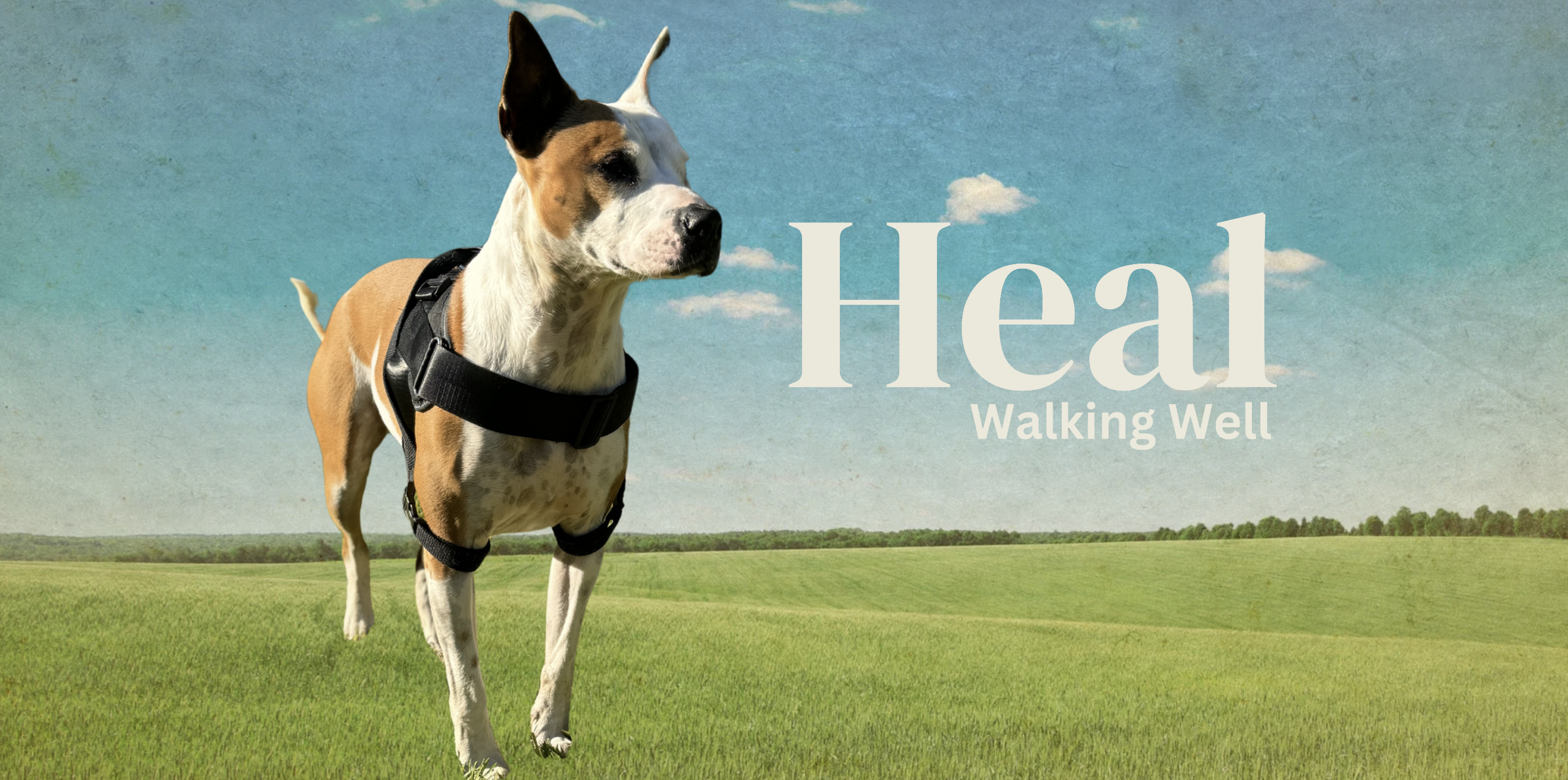
Walking Well
Australian Made and Australian Owned. Designed and developed by qualified canine behaviourist, Heal has invested in a pilot study to assess the efficacy and ethics of the gear and continues to ensure every part of its design, manufacturing and delivery is provided with the best quality, care and passion.
We are changing the path you walk on, when it comes to gear for your dog. Heal is a support system for dogs who need help to slow down to take in the world with their human.
Acknowledging that dogs explore and see the world through their nose, we developed Heal to give dogs freedom in their neck and face to take in the scents, without pulling their loved ones along with them.
The only support system of its kind, Heal goes with all harnesses and collars, is easy to use, and it works.
We are passionate about supporting people who need help on a walk, but still want their dog to have the freedom to explore.
Always seek veterinary advice for your dog when introducing new things into their life.
Reading
“Pauli, A.M.; Bentley, E.; Diehl, K.A.; Miller, P.E. Effects of the Application of Neck Pressure by a Collar or Harness on Intraocular Pressure in Dogs. J. Am. Anim. Hosp. Assoc. 2006, 42, 207–211
Hao-Yu Shih, Clive J. C. Phillips, Daniel S. Mills, Yifei Yang, Fillipe Georgiou, Mandy B. A. Paterson, Dog Pulling on the Leash: Effects of Restraint by a Neck Collar vs. a Chest Harness, Frontiers in Veterinary Science, 10.3389/fvets.2021.735680, 8, (2021).
Peham C, Limbeck S, Galla K, et al. Pressure distribution under three different types of harnesses used for guide dogs. Vet J 2013; 198(Suppl 1): e93–e98
Carr BJ, Dresse K, Zink MC. The effects of five commercially available harnesses on canine gait. Proceedings at ACVSMR conference, 2016.
Kiss, R., Nagymáté, G., & Biksi, O. (2018). Biomechanical analysis of the kinematics of different dog harnesses—research report -. Cooperation Research Center for Biomechanics Budapest University of Technology and Economics.
Zsófia Pálya, Kristóf Rácz, Gergely Nagymáté, Rita M. Kiss, Development of a detailed canine gait analysis method for evaluating harnesses: A pilot study, PLOS ONE, 10.1371/journal.pone.0264299, 17, 3, (e0264299), (2022)
Sawako MURAKAMI, Yasuji HARADA, Yasushi HARA, Alterations in the ground reaction force of dogs during trot after immobilization of the stifle joint: An experimental study, Journal of Veterinary Medical Science, 10.1292/jvms.20-0249, 83, 2, (297-303), (2021).
Thomas TM, Marcellin-Little DJ, Roe SC, et al. Comparison of measurements obtained by use of an electrogoniometer and a universal plastic goniometer for the assessment of joint motion in dogs. Am J Vet Res 2006; 67: 1974–9
Williams, E., Hunton, V., Boyd, J., & Carter, A. (2023). Effect of harness design on the biomechanics of domestic dogs (Canis lupus familiaris). Journal of Applied Animal Welfare Science, 1–17
Galla, K., Peham, C., Limbeck, S., & Bockstahler, B. (2013). Kinematic analysis of the influence of three different guide dog harnesses on the movement of the spine. Wiener Tierärztliche Monatsschrift, 100, 306–312
Knights, H., & Williams, J. (2021). The influence of three working harnesses on thoracic limb kinematics and stride length at walk in assistance dogs. Journal of Veterinary Behavior, 45, 16–24
“Lesley Townsend, Laura Dixon, Louise Buckley, Lead pulling as a welfare concern in pet dogs: What can veterinary professionals learn from current research?, Veterinary Record, 10.1002/vetr.1627, 191, 10, (2022).
Carter, A.; McNally, D.; Roshier, A. Canine collars: An investigation of collar type and the forces applied to a simulated neck model. Vet. Rec. 2020
Gillette RL, Angle TC. Recent developments in canine locomotor analysis: a review. Vet J 2008; 178: 165–76
Grainger, J., Wills, A. P., & Montrose, V. T. (2016). The behavioral effects of walking on a collar and harness in domestic dogs (Canis familiaris). Journal of Veterinary Behavior, 14, 60–64
Shih H-Y, Georgiou F, Curtis RA, Paterson MBA, Phillips CJC. Behavioural Evaluation of a Leash Tension Meter Which Measures Pull Direction and Force during Human–Dog On-Leash Walks. Animals. 2020; 10(8):1382
